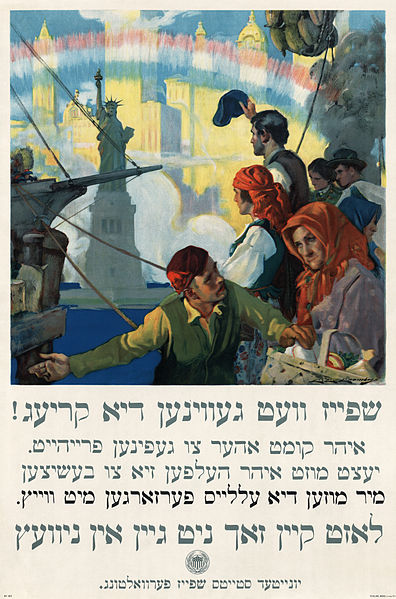
Several weeks ago, I attended a screening of the classic 1937 Yiddish language film, The Dybbuk, open to the University of Chicago community. For me, the appeal was in the Yiddish language; the film was a natural compliment to my Yiddish 101 class, and, in fact, my professor highly encouraged my class to attend. There were several German language students there, as well, apparently to view the film as an example of German Expressionism. At one point, while the film showed a community observing Sukkot with a lulav and etrog in their shtetl’s synagogue, one of these German students innocently questioned, “What’s this ceremony?” At that moment, a realization of belonging swept over me; I understood—and understood that I understood—not only what Sukkot was as a tradition, but that it was my tradition, and that, as such, I belonged to a culture and a heritage that existed long before me—and here was concrete proof! A film from sixty years before my birth showcasing the exact same ceremony I had witnessed empirically countless times. It was truly remarkable.
The experience reminded me why I elected to take Yiddish in the first place. It was a question I have been asked time and time again since the beginning of the school year: “Dani, why take Yiddish when there are so many more practical languages to take?” Now, normally I just shoved my imaginary hipster glasses onto my face and proclaimed that Modern Hebrew was simply too mainstream. The truth, however, is that I didn’t know my motivations, except for strongly feeling a sense of both personal and familial nostalgia associated with the language. While my immediate family never spoke Yiddish fluently, words from the Mame-Loshen are sprinkled throughout my childhood memories. As a child, my mother helped me wash my ponem instead of my face. When I was tired, my father told me to lay my kop on his shoulder instead of my head. When they tucked me in at night, my parents told me to have a good shluf. Additionally, though I never knew them personally, I have been told that my great-grandparents spoke Yiddish both before and after coming to America, as presumably did their parents and grandparents and so forth.
The nostalgia also applies to discovering the cultural elements of Yiddish in addition to the linguistic. Sholem Aleichem’s short stories, for instance, have always captivated me—of course because they were funny and touching, but also because I recognized a similarity in them. For one thing, my grandparents have always said that those stories resemble stories their parents told them about the “Old Country.” More saliently, however, at least to me, is that in Sholem Aleichem’s stories, I recognize the closeness and sense of mutual caring—if the occasional familial pettiness—that characterizes my own community. There is a profound sense of belonging inherent when I read these stories that transcends even time itself, and that’s a special thing. On this note, when I was in Krakow several summers ago, I attended klezmer concert in the streets of the Jewish Quarter as a part of the Krakow Jewish Culture Festival. Traditional klezmer music mixed with modern klezmer songs as together 10,000 people danced in the streets of a city regarded as a historic hub of Ashkenazi Judaism. There was a linking of the Yiddishkeit culture of the past and the present, and there were 10,000 people reveling in it.
Admittedly, and importantly, Ashkenazi Judaism from which Yiddish language and culture springs is not the only Jewish culture that exists. Additionally, it isn’t more important or more special than, for instance, that of any of the numerous Sephardic Jewish cultures. Yiddishkeit is, however, my Jewish culture. Through it, I’m able to understand more about the places and the people I come from. I don’t take Yiddish to be a hipster; I take Yiddish to better understand the heritage that reared me, and how it has reared me. I learn more about my personal history, and by extension, about myself. Like how the traditions of Sukkot can be admired in a film, or embraced as part of one’s tradition, so can the Yiddish language and Yiddishkeit, or that of any culture of personal relevance. If there’s one thing I hope to do by taking Yiddish, it is to embrace the language and culture, not only as a beacon of the past, but as something exceedingly relevant to my present.
Dani Plung is a student at the University of Chicago.
